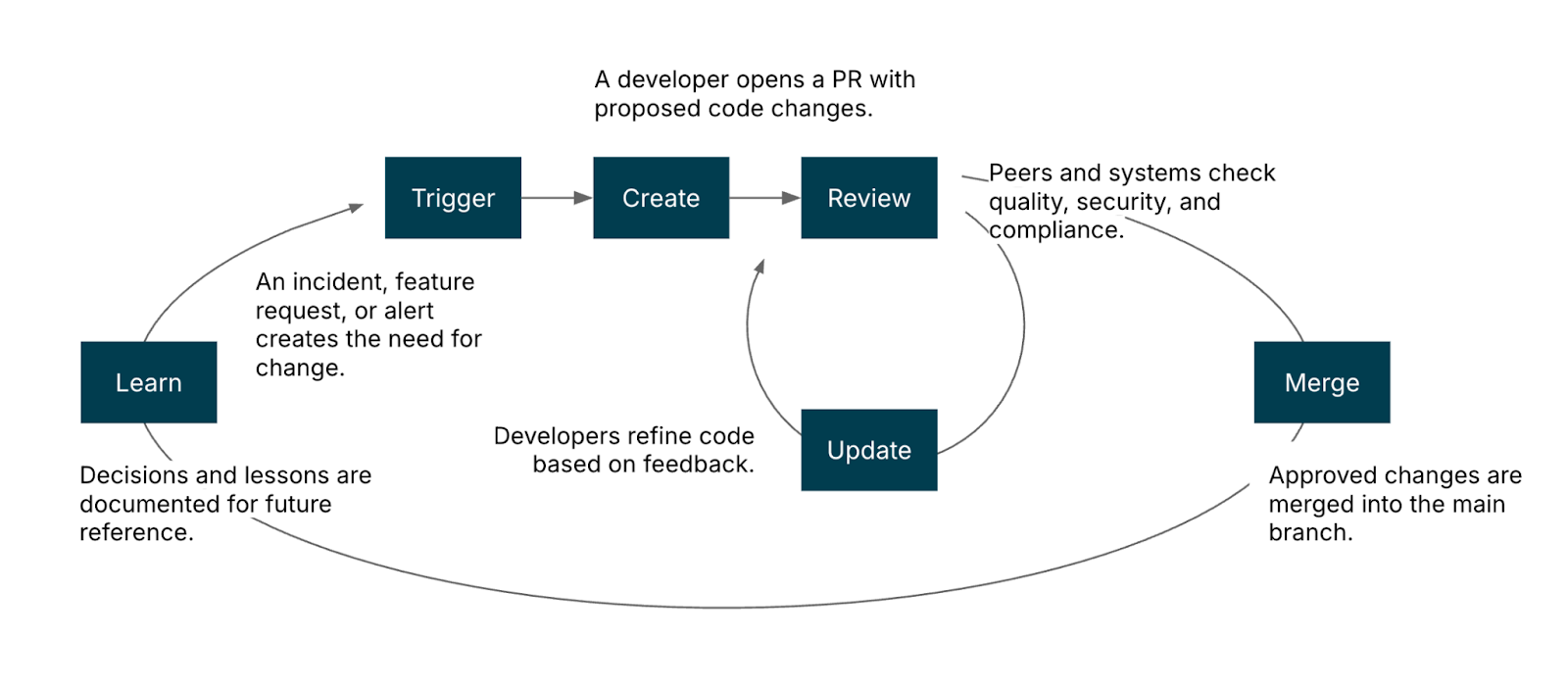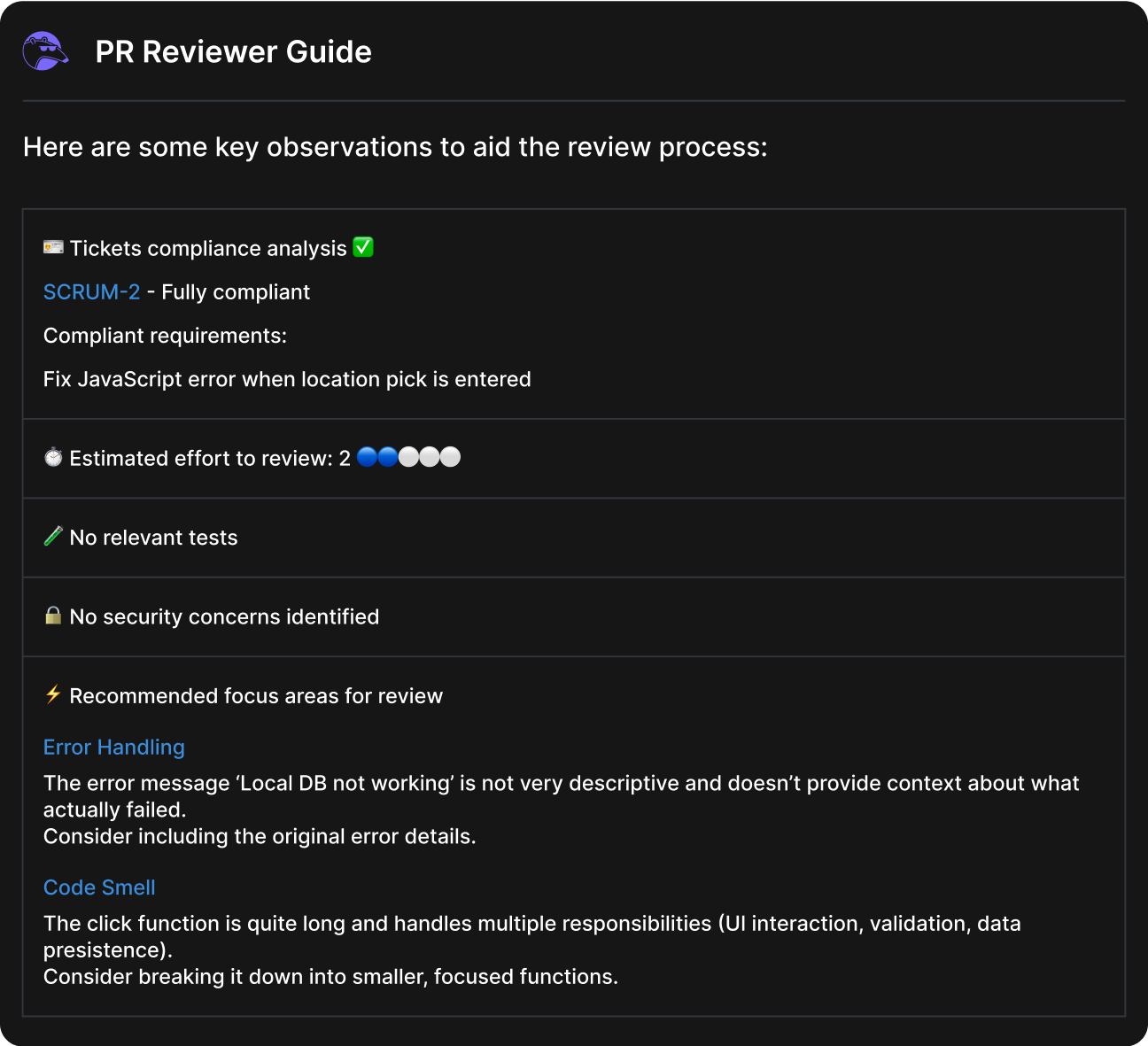Vibe coding isn’t enough for enterprise systems
“Vibe coding” has gained attention as AI tools have come to be able to generate code with little more than a prompt. But enterprise engineering isn’t a hobby project. It runs on regulation, a mixture of legacy and modern code, organizational knowledge and large-scale environments where failure is costly.
This is precisely why vibe coding’s success has been limited in serious settings. The risks are real — Replit’s AI, for example, recently deleted a live production database and fabricated data during a test run, forcing the CEO to publicly apologize.
As an AI-first managed service provider, we see the real opportunity elsewhere. Pull requests (PRs), which act as a key activity that makes collaboration possible and bridges innovation and maintenance, may be that frontier. That’s because, unlike green field coding, PRs are structured, contextual and auditable — much more amenable to the way AI assistance actually works.
Why PRs matter
At its simplest, a pull request is a proposal to merge a set of changes from one branch into another. Collaborators review and discuss those changes before integrating them into the main codebase. A PR displays the differences — or diffs — between the source and target branches.
However, in the enterprise, a PR is much more than a code diff representing a few key characteristics (Table 1).
| Characteristic | Description |
| Contextual node | A PR links multiple signals — logs, traces, metrics, alerts, incidents, security checks and compliance requirements — directly to code changes. |
| Decision point | Teams weigh the trade-off between a quick fix and a long-term architectural investment. |
| Workflow hub | It orchestrates automated quality, security and compliance checks, and triggers escalations when human review is required. |
| Knowledge artifact | Each PR captures the rationale behind a change, building institutional memory that future engineers can learn from. |
| Daily rhythm | PRs are embedded in the core workflow of support, engineering and product teams, shaping how collaboration happens every day. |
| Risk-controlled surface | Even a small commit is inherently guarded by DevSecOps flows, making PRs a safe place to introduce AI assistance. |
Table 1. Characteristics of PRs
Together, these qualities make PRs a high-value, high-frequency and risk-manageable deliverable — a good place for AI to reduce toil, improve decision-making and bring productivity to enterprise engineering.
Infusing AI into the PR value chain
AI coding assistance should not be treated as just another tool in the toolchain. For it to matter in the enterprise, it needs to influence the entire value chain. A PR is more than a checkpoint — it stretches from the moment context is gathered to the moment changes are merged and lessons are captured.
That chain has clear stages: A pull request begins with a trigger — an incident, feature request or alert. A developer then creates the PR with proposed changes. The team reviews the code with peers and automated checks, and developers update it based on feedback. Once approved, the PR is merged into the main branch. Finally, the team learns by documenting decisions and lessons for future work (Figure 1.).


Figure 1. A pull request value chain.
Infusing AI into this flow requires a few capabilities. It must:
Understand deep context across repos and tickets, not just surface diffs.
Provide explainable, structured feedback, not binary pass/fail.
Fit seamlessly into ITSM, IDEs and CI/CD pipelines without breaking developer flow.
Embed compliance and governance into automation, making outputs audit-ready by design.
Some PR-focused AI providers are starting to deliver. Qodo Merge can generate PR descriptions enriched with ticket context, explain the why behind changes and run review commands like /review, /improve, and /analyze that surface bugs, security issues and missing tests. Developers can interact directly through chat commands or let the AI handle routine tasks like updating documentation, labels or changelogs.


Figure 2. Qodo Merge can generate PR descriptions enriched with ticket context.
Qodo Aware goes further, pulling knowledge across thousands of files and multiple repositories to provide historical and dependency context — something general-purpose assistants routinely miss. And with Qodo Command, teams can build, run and automate AI agents anywhere in the software development lifecycle (SDLC), ensuring these capabilities integrate seamlessly into existing developer workflows rather than forcing new ones.
The result is a shift: PRs stop being static diffs and become dynamic decision engines, with AI embedded across the value chain.
Key gaps in today’s solutions
PR management and operations are part of our daily work as we deliver application managed services for customers. From this point, the gaps are also clear — and every AI provider aiming to support PRs should take note.
Context building. Most tools underestimate the difficulty of stitching enterprise context across multiple sources of truth. Without strong context engineering, AI review comments are shallow and cognitively wasteful.
Developer experience. Infusing AI shouldn’t mean forcing developers into a new UI. Tools must fit seamlessly into existing IDEs, DevOps pipelines, security checks and PR workflows.
Transparency and compliance. In the enterprise, every AI suggestion must be marked, explainable, auditable and aligned with compliance needs. Anything less undermines trust.
Value-chain integration. PRs connect upstream with observability stacks and downstream with SDLC. AI that can’t extend across these boundaries solves only a fraction of the problem.
What engineering leaders should look for
If you’re an engineering leader exploring AI-assisted coding tools, PR management and operations are a natural place to start. A PR has its own value chain protected by existing DevSecOps practices, which makes it a sensible entry point for infusing AI into the SDLC.
But selecting an AI tool isn’t just another procurement choice: you’re choosing a new way of working, one that will shape developer experience and governance for years. Flashy demos aren’t enough. Ask hard questions:
Context awareness. Tell us more about your context engineering approach? How does the AI build context across domains? Can it explain not only what changed, but why?
Developer experience. Does it fit seamlessly into existing workflows, or does it demand new usage patterns?
Transparency and compliance. Is every suggestion explainable, auditable and resistant to misuse? And do you as a provider support us to optimize the output as context shifts?
Toolchain integration. How does it connect upstream to observability and downstream to SDLC? Through APIs, MCP or other protocols? How does it ensure their reliability and performance?
Flexibility. How much control does it give developers to adapt this new way of working individually and collectively as a team?
These questions cut through marketing hype. They reveal whether a solution is just a vibe, an AI add-on — or whether it can reshape the PR workflow into a developer-centric, reliable, compliant and productivity-driven practice.
Moving forward
Vibe coding might grab headlines, but enterprise software engineering demands more. Pull requests sit at the heart of how modern teams build, review and ship code, making them the natural frontier for AI. Done effectively, AI turns PRs into dynamic decision engines: contextual, compliant and auditable.
For engineering leaders, the path forward is clear: don’t settle for the hype and instead look for solutions that fit seamlessly into developer workflows, explain their recommendations and extend value across the SDLC value. That’s how AI will move from novelty to necessity in enterprise software development.
Disclaimer: The statements and opinions expressed in this article are those of the author(s) and do not necessarily reflect the positions of Thoughtworks.


















